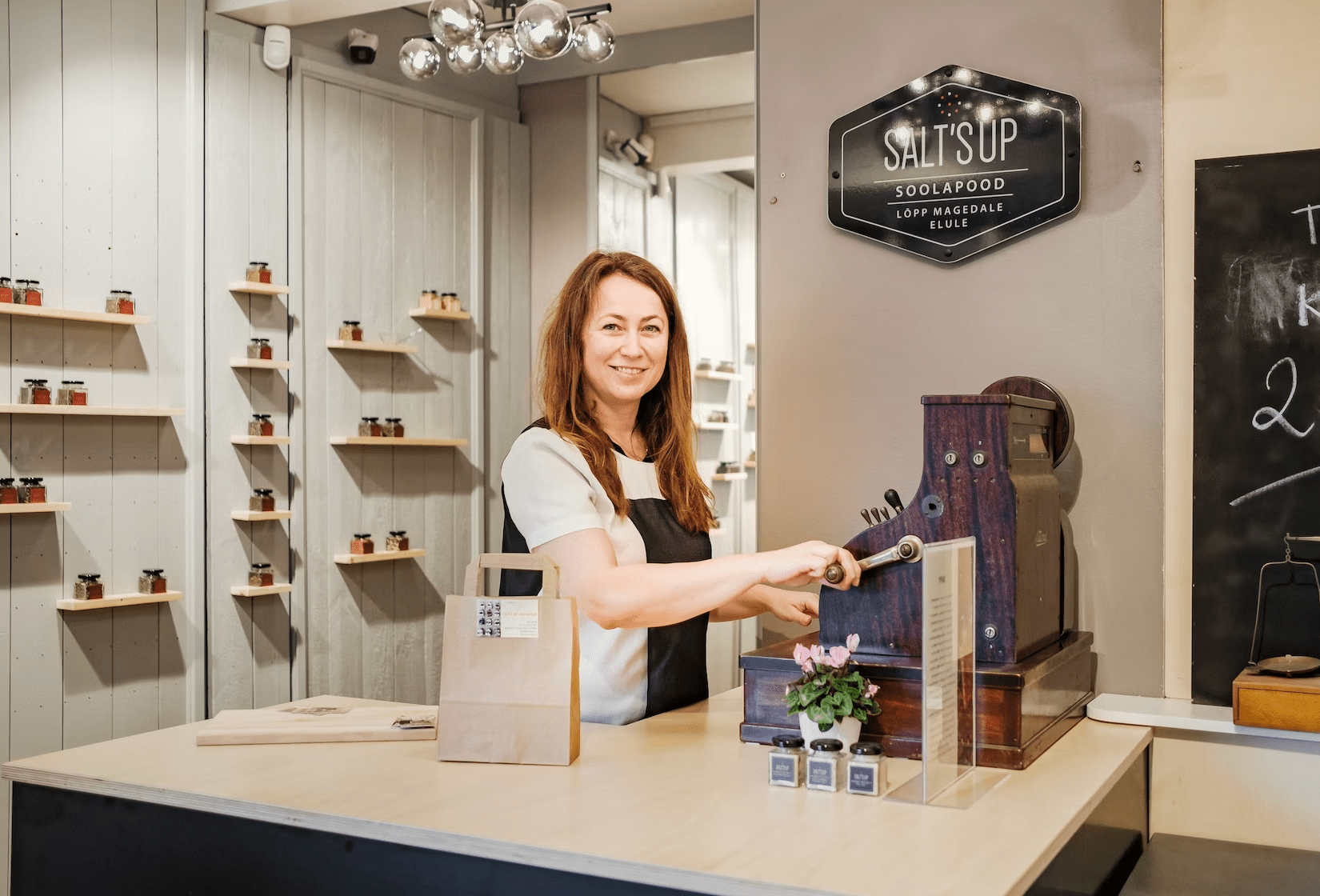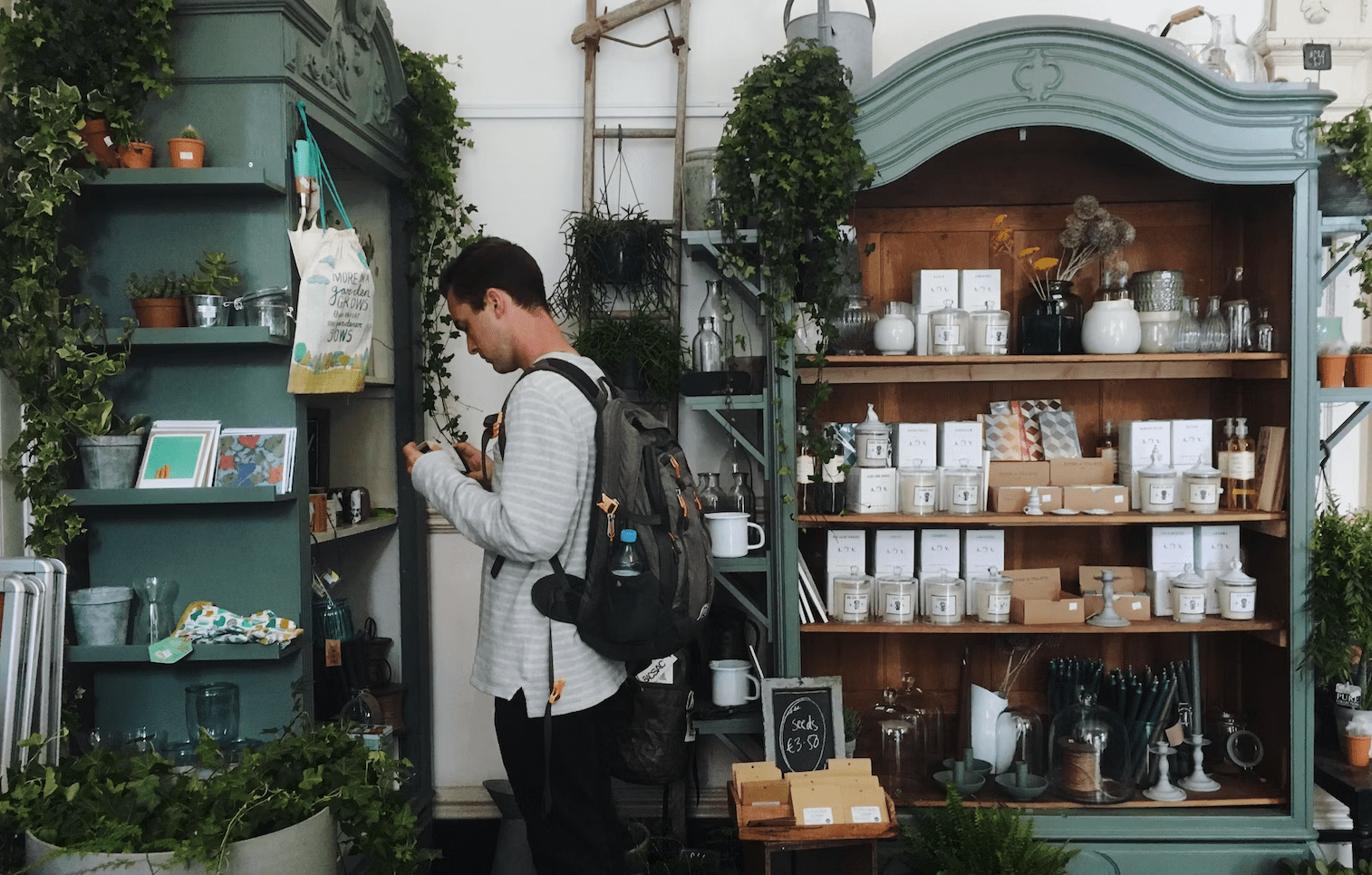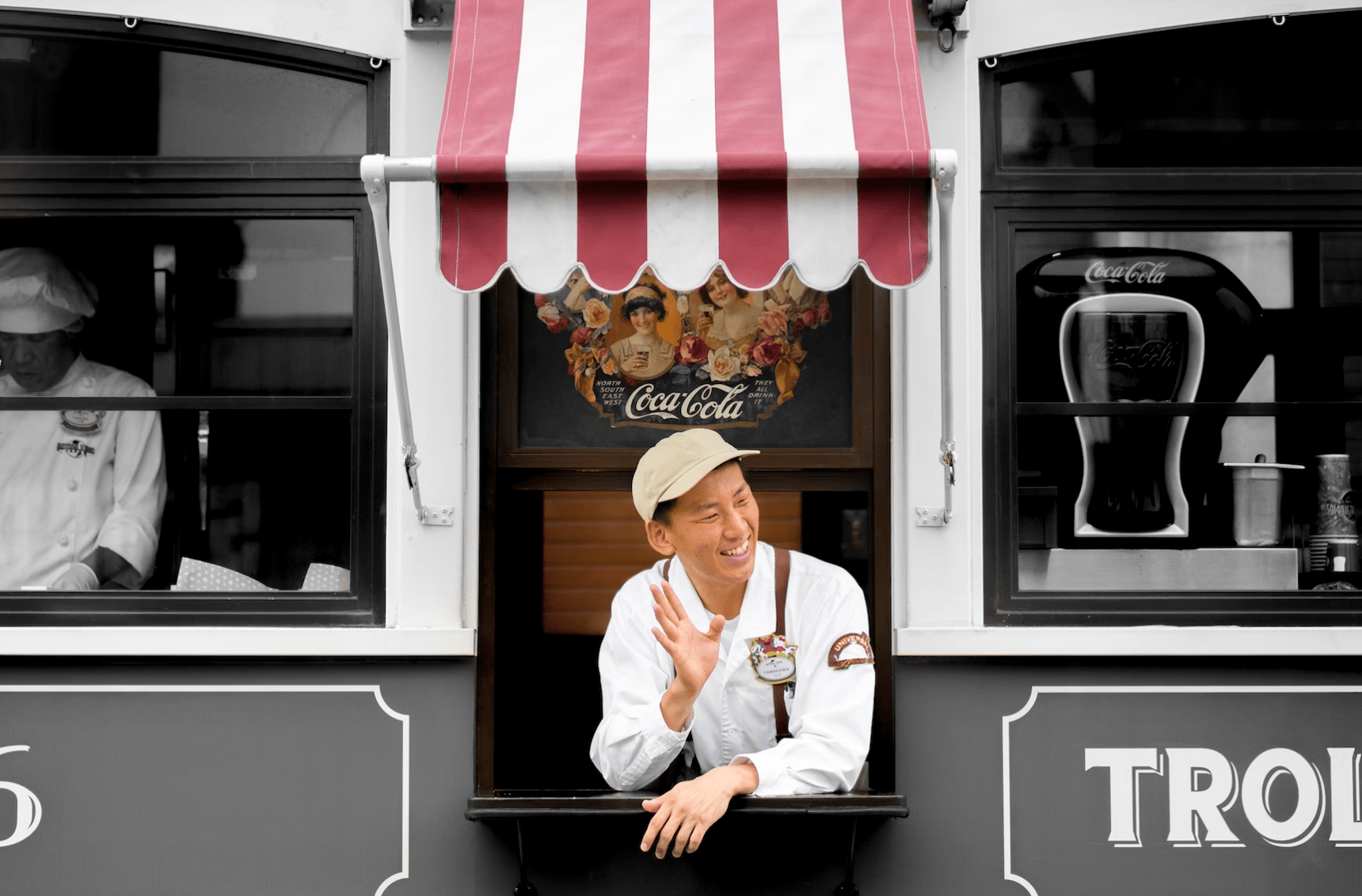Crafting Customer Journeys
Entrepreneurs put so much time, effort and care into their product and services…and then unwittingly wrap them up in an awful customer experience.
They never mean to be bad, but they make the customer feel confused, lost, unsure, overwhelmed or underprepared, all of which make people start looking for the exits.
It’s easy to forget that a customer’s path to your business starts long before they meet you, and lasts long after they’ve made a purchase.
If you can make that journey pleasant, you’ll create ambassadors and advocates who talk about you to their friends and come back for more.
If you make that journey difficult, you won’t see many customers, you’ll annoy the ones who persevere, and they’re even more likely to tell their friends to stay away.
Sales is sometimes taught using the idea of a “Funnel” with 4-6 stages, going from a vague awareness of your brand through to making a purchase.
Funnels are a helpful for describing parts of the buying process, but they can become too industrial – you start to believe that your job is to cram customers into the top of the funnel and squeeze them into making a transaction.
Generally speaking, thinking of people as objects to push through a system usually doesn’t end up with a compassionate or considered outcome, and businesses that try this usually don’t have many fans.
Funnels can overlook the real forces behind why people do/don’t make a purchase: seduction and frustration.
Seduction And Frustration
Shopping doesn’t need to be painful, it can be a pleasant or exciting experience, especially when you remove a problem from your life or acquire something that delights you:
· The possibility of a bargain
· Creating a “better version of yourself”
· Resolving an annoying issue once and for all
· Your day/week/life getting easier
· Making progress towards a goal
· A gift that makes someone smile
· A celebration or a milestone
· Dreaming of a future holiday or future home
Clever brands are good at showing you things that they think you’ll like, guiding you towards the options that meet your requirements, introduce you to new options you hadn’t considered, remove your fears and objections, give you new confidence and stay in touch for months/years after your first transaction.
And if they’re good at their jobs, you’ll barely notice that it’s happening.
These aren’t all for big purchases either – you see it when you or your colleagues walk past nearby cafes to go to “the good café”.
All of them probably have a similar menu, but the one that people like has a better atmosphere, a nicer staff, better coffee, etc.
Or maybe it’s a manager who’s choosing caterers and contractors for an upcoming event, calling the business that turns up on time and remembers their names, even if they’re more expensive and less flexible on dates.
People will go out of their way to be treated well.
And yet, a lot of businesses make the process frustrating.
You’ve probably experienced these as well:
· Sleazy salespeople
· Hidden fees that only pop up once you’re about to pay
· A “solution” that is the wrong fit for your needs
· Delays in customer service and in communication
· Low quality and poor performance
· Being sent back to square one
· Buyer’s remorse
· Annoying follow-ups
· High pressure sales tactics and making people feel guilty
· Bait-and-switch advertising
Sometimes these are the results of ignorance, sometimes laziness, sometimes predatory behaviour.
You usually see them when the customer is ill-informed, or has limited choices, or is spending a large amount of money, or is dealing with a bureaucracy.
With all customer journeys, the processes and technology is the same; the difference is in how they are used.
Do the follow-up emails feel helpful or like spam?
Do the salesperson’s suggestions benefit you, or them?
When you were signing forms, did you feel excited or nervous?
Did the signage feel fun, sophisticated, informative, predatory, soulless or confusing?
You’re likely to have access to the same marketing platforms and tools, how do you want to use them?
It’s also good to remember that your customer journey does not have to suit everyone, but it should be designed to suit someone.
Some people should enjoy it.
You can’t expect to please everyone, but you can at least give them clues and signals as to who your customers are, so that they don’t get lost and frustrated.
The Buying Process From The Customer’s Side
Some people like shopping, but fewer people like breaking routines and trying new things.
If you want to acquire a new customer, you’re going to have to make that person feel comfortable learning how your business works, make a decision and try something different.
If at any stage they stop feeling comfortable, they’ll leave and stick with what they know.
You’ve probably experienced this for yourself, it happens a lot online: you get 40-80% of the way through the buying process in a store you’re visiting for the first time, you get lost or stuck or confused, and after a few frozen seconds you close the tab.
When you’ve bought something before, you become a “sophisticated customer”, who know what to ask and what to expect.
If you’re not as familiar, you’re an “unsophisticated customer”, will be asking yourself all sorts of questions along the way, especially if you’re buying something for a reasonable amount of money.
Here’s a rough approximation of a buyer’s thought process when shopping for something different:
· Am I in the right place? Is this the right path?
· What’s involved in this path and is it worth my time/attention?
· What are my options?
· I have some questions
· Can I see an example?
· Can I trust you?
· How much do I need?
· What’s the cost?
· Am I better off going bigger or smaller?
· What can I get elsewhere?
· How do I pay?
· What happens now?
· What if I have a problem later?
· Should we stay in touch?
That might sound overly dramatic, but think back to the first time you:
· Bought a wedding dress
· Tried Birkenstocks
· Chose health insurance
· Downloaded a dating app
· Bought a car
· Rented an Airbnb
· Had some clothes tailored
· Chose a gaming console
· Leased an apartment
· Applied for a visa
· Researched a university or training program
· Tried Karate
· Went to a Zumba class
· Chose Bluetooth headphones
· Hired an accountant
While these buying processes are all different, you might notice that this list has a few things in common.
They all involve change, they aren’t cheap, they involve a degree of risk, and have a chance of leaving you stuck or embarrassed.
The customer also has the option of doing nothing, or sticking with an easier option (but they don’t really want to).
Your brand is going to guide your future customers through a similar process.
Some of those questions won’t apply, and some will be dealbreakers.
And fortunately, the process has a catchy name…
The Five E’s Of Customer Journeys
We can broadly describe the process in five stages, each beginning with E:
Entice, Enter, Engage, Exit and Extend.
Let’s have a look at them in more detail.
Entice
Entice is the moment when a customer first thinks to themselves
“Hey you know what, this might be for me?”.
They might have heard a recommendation from a friend, seen someone wearing something that looked great, saw a post on social media, become frustrated with something that is slow or broken, or walked past your shop.
In any case, it’s likely to have been prompted by something, even if that something wasn’t to do with your brand.
And it’s made your customer curious, open to a discussion and the next step of the process.
What’s the first thing they do?
Are they in your neighbourhood?
Are they typing something into Google?
Are they on your social media page or website?
Are they talking to someone who’s bought this before?
What questions are on their mind?
What objections or concerns are holding them back?
How do they describe what they’re looking for?
Customers usually have more options than they have bandwidth, so there’s an early narrowing of brands right at the start.
e.g. if you’re shopping for a blazer at a mall, there are certain stores that you’ll instantly rule out, leaving you with 2-5 main options to explore first.
If you’re looking at cars, you’ll likely do the same thing; choose 3-5 brands to research, even if you can’t fully articulate why some others didn’t get considered.
This is where advertising pays off, it gives you an advantage at the start of the process, because it makes your company one of the top 2-5 options that a customer even considers.
One of the ways that customers narrow the field is to add 1-2 parameters at the start of their buying process.
This could be a price range, a colour preference, an ethical consideration, a location radius, a brand they like, a time requirement or a desire for something luxurious.
e.g. “Bluetooth headphones under $150” vs “Bluetooth headphones with bass”
“Airbnbs with a pool” vs “Airbnb near this conference hall”
“Accountants for tradespeople” vs “Accountants near me”
“Cars with a long warranty” vs “Cars with three rows of seats”
If you know what the parameters are, you can intercept customers early in their search process.
You can also create content around these topics, e.g. “Best Bluetooth headphones for the gym” or “What tradespeople need from an accountant”, which will immediately catch customers’ attention.
The goal of the Entice stage is to prompt the customer to interact with your company, which brings us to…
Enter
The Enter stage lasts only a few seconds, but they’re crucial seconds.
This is the moment when someone clicks on a link, walks into your store, calls your number, strikes up a conversation, any time they enter your world.
It’s new territory for them, and they’re taking those few seconds to work out if they should learn more.
They are looking at your displays, reading the headline on your website, making or avoiding eye contact with your sales staff, reviewing your most recent social media posts, and generally getting a sense of whether or not they’re in the right place.
They are judging the book by its cover, and they are right to do so.
The key moment at the Enter stage will look quite different based on your industry.
Sometimes a customer wants to get a sense of ambience, sometimes they want information, sometimes they want to speak to a real person as soon as possible.
Your job as the business owner is to know what customers are looking for, then make it as obvious as they’d like.
e.g. Tiffany doesn’t try to cram as many pieces of jewellery into their showroom as they can, Apple don’t let people walk into their store without a greeting and a question, and IKEA doesn’t leave any mystery as to where they want you to go.
Big brands are often intentional about their first impression, setting the customer up for a particular type of transaction without frustrating or overwhelming them.
At least, that’s what the companies who want to stay big will do.
The test of the Enter stage is whether or not your target customers are taking the next step.
You won’t be everyone’s cup of tea, but you want to be some people’s favourite cup of tea, and their opinions/behaviours are the ones to measure.
Are customers given a good sense of your brand within the first five seconds?
Did your team get a sense of what they were looking for, and could they offer a suggestion?
Could web users find your menu and work out which page to visit next?
Did anything drive them away?
For the customers who quickly left, where would they go next?
Were they likely to be the right fit for your brand?
Did they come back some time later?
You can measure this with digital data, but also with your eyes.
What are customers thinking and feeling in those first five seconds?
What’s the bounce rate for your landing pages, and how long do people linger?
How many people enter your space, versus how many make a purchase?
How does this compare to your peers?
Once a customer starts asking questions and researching their options, we can start to properly Engage with them…
Engage
The Engage stage is often the longest part of the journey, as customers start to “go down the rabbit hole”.
This is where they take garments to a change room, take the car for a test drive, flick through books, read reviews from past customers, watch your video content, ask your team’s opinions on different packages, and begin to decide what they’d like to buy.
While this looks completely different for different industries (it’s harder to buy a house than a new pair of jeans), there are some common principles and key moments to consider.
Firstly, customers want a manageable number of options to weigh up, usually somewhere between one and five, depending on how much they already know.
They will quickly rule out a lot of options, then spend more time deliberating between the final few candidates, whether it’s choosing a hotel, a phone, a pram or hiring a new team member.
Sometimes this is limited by a practical factor (they need a car with seven seats), sometimes by their budget (they need a car under $25,000), sometimes by an aesthetic preference (they like taller cars or bright colours).
Secondly, customers like to hear from past customers or professional reviewers, to get a less biased perspective.
They might look at Amazon reviews, TripAdvisor, Google, Yelp, Facebook, Trustpilot, Choice, GlassDoor, newspaper columnists, social media influencers, friends or neighbours, etc.
Each of these still carries a bias, but they’re more credible since they don’t directly come from your company.
While you can’t control these, you can influence them (e.g. responding to upset customers, removing fake reviews, incentivising happy customers to post about their experience, etc.).
Some brands advertise their ratings from these platforms, or publish positive testimonials on their websites, using this “social proof” to give customers confidence in their company.
Thirdly, customers weigh up their options and draw comparisons to alternatives.
A lot of sales training focuses on this stage, and rightly so, since customers are often open to upselling or bundling, or might choose to walk away completely.
You’ve no doubt seen ecommerce sites list 3-4 packages, cheapest on the left, premium on the right, the middle one inflated with a star that indicates “best value” or “most popular”.
Others make tables with a list of their features/benefits, next to their rival’s features and benefits – and funnily enough the brand making the diagram somehow ticks all the boxes!
Some companies use sweeteners and incentives at this stage, throwing in extras or offering discounts if you add another item to your cart.
Other companies use pressure and scarcity, suggesting that this deal won’t last or that another buyer will snap it up if you don’t act now.
You’ll also see brands trying to secure a sale by reducing the risk involved, offering 14-day free trials or money back guarantees – knowing that most customers won’t be bothered to cancel the transaction once they’ve used their purchase for a few weeks.
Finally, there’s the purchase itself, with customers choosing a payment method and completing the transaction.
You’ll have seen some businesses try to make this step as quiet and smooth as they can, so that you don’t get spooked.
Other businesses use this as a chance to hook you in, offering extra impulse items or extended warranties, or signing you up to their VIP loyalty club.
You might have even experienced a moment when you have your credit card ready to pay for something, only for a site to ask you to create an account with a strong password, so you close the tab and resume your life as it was before.
Context is everything.
Buying a car is quite different to buying a book, so a designer’s job is to understand what their customers are happy to do, and create an experience that neither scares them away nor misses a golden opportunity.
Your job might be to “mystery shop” at other businesses to see what’s involved in their sales process, taking note of what you liked and what you found uncomfortable.
There are a lot of good sales books/programs out there, but keep in mind they mainly fall into two camps:
1. How might we delight people to keep them coming back for more?
2. How might we coerce people and squeeze the maximum from them?
Both of these work, but they create very different customers experiences, and very different brand perceptions.
We like the golden rule of “Do unto others as you would have them do unto you”, and so try to avoid any steps that you’d hate as a customer.
And contrary to popular belief, the purchase isn’t the end of the Customer Journey…
Exit
While Entice and Enter describe your first impression, Exit describes your last impression, which is often overlooked by entrepreneurs.
It’s not overlooked by customers, who take great note of their last impression, sometimes described as “the taste in my mouth”.
You tend to notice it when it’s particularly good or particularly bad, like a handwritten note in a mailed package, or a 45-minute wait time when calling a customer service number.
One of the reasons why this is so influential is called “The Peak-End Rule”, which suggests that customers evaluate an experience by two things; the best bit and the last bit.
We remember highlights and the last moments, so a business owner makes the most impact to our experience when they improve one or both of those elements.
e.g. ask someone how a concert was and they’ll describe the best part of the show and the traffic jam getting out of the venue.
This is why dentists give kids gifts as they leave, why some restaurants present small chocolates alongside the bill, and why some business class flights come with a chauffeured ride home – they are trying to end on a happy note.
If you’re in a field where personalised service is helpful, this might take the form of a courtesy call – checking in to see how your customers are enjoying their purchase or how well they’re implementing what you taught them.
In just a few minutes you can unpick issues, detect any concern or buyer’s remorse, and offer suggestions that might give customers what they’re looking for.
That’s not to suggest that a baker has to call up each customer who bought a donut, but a caterer might want to call the event organiser who bought 200 donuts; it solicits helpful feedback and confirms that the customer got what they wanted.
Interestingly, most of these last impressions don’t cost much or any money – they require creativity and care.
e.g. the way your bag is handed to you, the effort put into your confirmation email, the follow-up survey you send after two weeks, what you say as customers leave, mentioning something you remember the customer talking about, etc.
This is an area where a founder has an advantage over a franchise – that franchise’s team are on autopilot doing just enough to get through their day, while you (hopefully) genuinely like your customers and want to show them true hospitality.
It’s almost impossible to fake and customers can pick up on sincere attention.
But even the Exit isn’t the end, since there’s always the chance of the next purchase…
Extend
People love to linger on strong experiences, both good and bad, and like to tell others about what we found.
We also tend to form habits around brands we like, so when we need another similar product/service our first thoughts turn to the experiences we enjoyed.
This is a fantastic opportunity for your business – a little bit of effort on your end can boost your chances of a repeat purchase or a warm introduction to a new customer.
e.g. if you own a Toyota and have appreciated how they treated you during the purchase process, you’re likely to return to that dealer for servicing and repairs.
When you need another car in the future, Toyota is likely to be in the top 3-4 brands you consider.
If the dealer was rude or the service team overcharged you, they’ll miss the chance to see you again when you’re car shopping in the future.
Once again, context is everything and some purchases can’t be repeated, so it’s your job to understand your customer and what they’re going to need.
· Will they need accessories and refills?
· Will they need servicing and repairs?
· Are there likely to be recurring appointments?
· Are they hosting/arranging more events?
· Have they got siblings/children/colleagues/clients who will need something similar?
· Will they outgrow or wear out their purchase in a few years?
These questions are designed to prompt two main insights: when will customers want to hear from us, and what hook will draw them back in?
Please don’t do what annoying marketers do and send a weekly update if customers don’t need to think about this purchase for years to come, your email will diminish their memory of their experiences with your brand.
By contrast, you might have received a nudge from a dentist reminding you that it’s been nearly a year since your last annual checkup.
Dave Trott has a great example about florists contacting him on February 7th, asking if he’d like to order flowers for his wife on Valentine’s day, like he did last year.
They know that a lot of husbands are forgetful and panic buy at the last minute, so this early reminder benefits both parties.
For the hook, you might offer some news, send a gift, an invitation to an event, a freebie or incentive, a voucher, a discount code or a referral program that incentivises you to bring in new customers.
These depend on your industry and some might be wildly inappropriate, but the payoff is that you can shortcut the customer’s usual research process.
And in a lot of cases, these only cost you money if they work; coupons, discounts and referral incentives are free to offer, and only take effect once there’s a purchase.
Reviewing Your Five E’s
The good news: every part of this is manageable; learned skills and processes that you can implement for your brand.
The bad news: these five steps are unlikely to work well by accident, and if you haven’t deliberately designed a process then it’s probably clunky and costing your money.
The best place to start is to review what you’re doing naturally – some of it is working since you likely have customer interest and some sales.
If you’re like most founders you’ll also have a list of moments that make you cringe – things you said in a conversation that lost a sale, confused customers you couldn’t serve in time, awkward delays that took the momentum out of a deal.
These are fuel for improvement, and are best placed on your “Fool Me Twice Checklist” of things you’re determined to never get wrong again.
The second place to look is at your direct competitors, peers and rivals.
What do customers go through over there and is it working?
You can implement what seems sensible, and use their clumsy weak points as a chance to offer a better experience.
The third place to look is at best practice examples from other industries, who have elements that you can adapt or re-create for your circumstances.
Tourism operators can learn from restaurants, musicians can learn from shoe companies, professional service firms can learn from streetwear brands.
You might borrow their systems but change the message, or use their tone/language but on different channels.
Good taste can come from copying good taste.
As they say in the design world “Don’t try to be different, just try to be good”.
Lots of founders have fantasised about 1-2 signature elements of their customer journey – something fun or eye catching, or a moment of above-and-beyond customer service.
These are great, but if they are surrounded by low points, then customers either will miss out on this hospitality or their enthusiasm will be short-lived.
It’s probably better to offer a customer experience that is standard for your industry and that doesn’t have major flaws, rather than trying to create a remarkable experience that leaves customers feeling lost, bored or overwhelmed.
Now that you’ve named the 5 E’s of your Customer Journey, you can start to improve them, either incrementally or with a total overhaul.
You can also design different journeys for different customers – adding more complexity and contact for the customers who want more attention and have bigger budgets, or simplifying the process for customers who want a quick resolution.
It all comes back to the same principle – work out how you want your brand to treat people, then build a system that makes it easy to live up to that standard.








